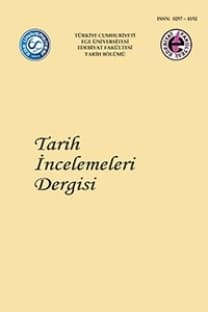II. Mahmud Devri Reformlarının Tebaa Tarafından Algılanışı
II. Mahmud devrinde yönetilenler için reaya yerine
tebaa kavramı kullanılmaya başlanmıştır. Böylece yönetilenler arasındaki
müslüman-gayrimüslim ayrımını ortadan kaldırmak hedeflenmiştir. Bu değişim
padişahın/devletin tüm yönetilenlere eşit mesafede olduğunun ilanı olarak
okunabileceği gibi Osmanlı yöneten-yönetilen ilişkisinin modernleşmeyle
birlikte değişmeye başladığının da göstergesi olarak da kabul edilebilir. Söz
konusu döneme dair devletin ya da padişahın bakış açısından tebaanın sosyal,
iktisadî, askerî konumu hakkında çok miktarda belgeye/metne ve bu
belgelerden/metinlerden yola çıkılarak hazırlanmış pek çok araştırmaya sahibiz.
Ancak tebaanın, devrin padişahını ve yaşadığı devri nasıl algıladığı hakkında
fazlaca bilgimiz bulunmamaktadır. II. Mahmud, pek çok tarihçi tarafından
reformcu, aydın, merkeziyetçi bir padişah olarak kabul edilmektedir. Hatta onun
reformlarının Cumhuriyet reformlarına zemin teşkil ettiği kanısı, tarihçiler
arasında yaygındır. Bu çalışmada günümüz tarihçileri tarafından yukarıdaki
şekilde tanımlanan II. Mahmud devri ve reformları bu reformlardan olumlu ya da
olumsuz etkilenen tebaanın gözünden değerlendirilecektir.
Anahtar Kelimeler:
Osmanlı Devleti, II. Mahmud, tebaa, reform, modernleşme
Perception of Reforms by Mahmoud II by His Subjects
During the reign of
Mahmoud II, the word tebaa (subjects) began to be used instead of reaya for those
being ruled. In this way, an attempt was made to eliminate the distinction
between Muslims and non-Muslims among the subordinates. This change can be
taken to mean a declaration that the sultan/state was at an equal distance to
all the subordinates but it may also be regarded as an indication that the
relationships between the ruler and his subordinates in the Ottoman state began
to change. We possess numerous documents/texts belonging to the said period
about the social, economic and military situation of the subjects from the
standpoint of the state or the sultan and various researchers conducted on the
basis of these documents/texts. However, we do not have much information about
how the subjects perceived the sultan of the period and the period he lived in.
Mahmoud II is regarded by many historians as a reformist, intellectual and
centralist sultan. Indeed, the notion that his reforms served as a groundwork
for the Republican reforms is common among historians. In this study, the
period of Mahmoud II, which is described as stated above by today’s historians,
and his reforms will be evaluated through the perspective of his subjects who
were affected positively or negatively by these reforms
Keywords:
Ottoman State, Mahmud II, subjects, reform, modernization,
___
- 1-Defter Tasnifleri a-Maliyeden Müdevver Defterler (BOA. MAD.) 2-Belge Tasnifleri a-Muallim Cevdet Tasnifi Askeriye Kısmı Belgeleri (BOA. C.AS.) b- Muallim Cevdet Tasnifi Saray Maslahatı Kısmı Belgeleri (BOA. C.AS.) c-Muallim Cevdet Tasnifi Sıhhiye Kısmı Belgeleri (BOA. C.SH.) d-Hattı Hümayun Tasnifi Belgeleri (BOA. HAT)
- ISSN: 0257-4152
- Başlangıç: 1983
- Yayıncı: Prof. Dr. Süleyman Özkan
Sayıdaki Diğer Makaleler
Eritre ve Etiyopya Arasındaki Danakil Bölgesinde Osmanlı Hâkimiyeti ve Kaymakam Pertev Efendi
Effects of the Decisions of San Remo Conference on Syria and Iraq
Kraliçe Tamara (Tamar) Devri (1184-1213) Gürcü Dış Politikası ve Bölgedeki Yansımaları
Pergamon’un Yolları: Antikçağ’dan Bizans’a Bakırçay (Kaikos) Havzası’nın Yol Sistemi
II. Mahmud Devri Reformlarının Tebaa Tarafından Algılanışı
Beyaz Rus Mültecilerinin Gözünden Milli Mücadele ve Ankara Hükümeti İle Olan İlişkileri
